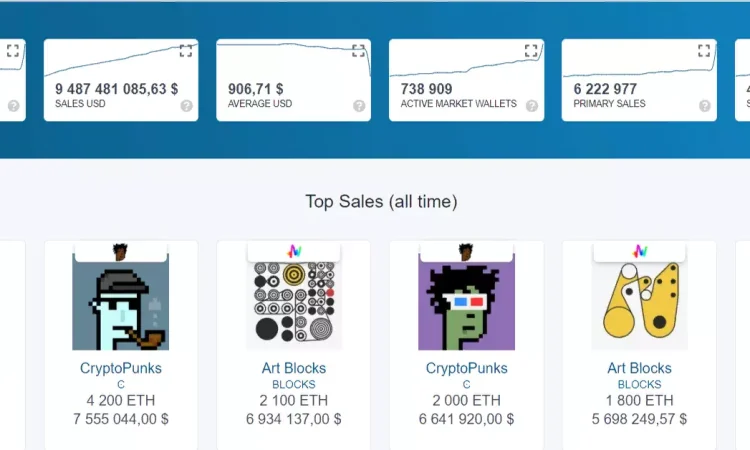In the world of digital innovation, few phenomena have made as much noise as Non-Fungible Tokens (NFTs). NFTs have revolutionized how we perceive ownership in the digital age, offering artists, collectors, and investors new opportunities to buy, sell, and trade unique digital assets. Central to this boom are nft marketplace, which act as platforms that facilitate these transactions. Whether you are an artist seeking exposure or a collector hunting for the next big asset, understanding NFT marketplaces is crucial.
What Are NFTs?
Before diving into the mechanics of NFT marketplaces, it’s essential to understand what NFTs are. An NFT is a unique digital asset verified using blockchain technology. Unlike cryptocurrencies like Bitcoin or Ethereum, which are fungible and can be exchanged for one another at equal value, each NFT is distinct. This makes them perfect for representing ownership of digital art, collectibles, music, videos, and even virtual real estate.
How NFT Marketplaces Work
NFT marketplaces are online platforms where users can mint, buy, sell, and trade NFTs. The platform acts as a medium for creators to upload their work and set prices, while collectors browse listings to find rare or valuable pieces. Most NFT marketplaces operate on blockchain networks like Ethereum, Solana, or Binance Smart Chain, ensuring the security and authenticity of each transaction.
Key features of an NFT marketplace include:
- Minting: Artists and creators can turn their digital works into NFTs by “minting” them on the platform. This process involves creating a smart contract that defines ownership and details of the asset.
- Listing & Pricing: Sellers can list their NFTs with either a fixed price or start an auction, allowing buyers to bid for ownership.
- Royalties: Many platforms allow creators to earn royalties on secondary sales, ensuring they continue to profit as the value of their work grows over time.
- Ownership Verification: All transactions are recorded on the blockchain, providing proof of ownership and authenticity for each NFT.
Popular NFT Marketplaces
With the explosion of NFTs, several platforms have emerged, each offering unique features and catering to different types of users:
- OpenSea: One of the largest and most well-known NFT marketplaces, OpenSea supports a wide range of digital assets, including art, collectibles, and virtual real estate. It operates on the Ethereum blockchain.
- Rarible: Another Ethereum-based marketplace, Rarible allows users to mint, buy, and sell NFTs, while also offering governance tokens to active users, giving them a say in the platform’s development.
- Foundation: A more exclusive platform, Foundation caters to high-end digital art, requiring artists to be invited before they can mint and sell their NFTs.
- Solanart: Built on the Solana blockchain, Solanart offers lower transaction fees compared to Ethereum-based platforms, making it an attractive option for creators and collectors alike.
Why Are NFT Marketplaces So Popular?
The allure of NFT marketplaces stems from several factors:
- True Digital Ownership: Before NFTs, digital art and media could easily be copied, leaving creators without clear ownership rights. NFTs provide verifiable ownership over unique assets.
- New Revenue Streams for Creators: Artists can now sell directly to collectors, bypassing traditional galleries and agents. Additionally, royalties from secondary sales offer ongoing revenue.
- Investment Potential: NFTs have become valuable assets for collectors and investors. Rare NFTs have sold for millions of dollars, attracting attention from the finance world.
- Community & Engagement: Many NFT platforms foster strong communities, where creators and collectors can interact, collaborate, and even influence platform development.
The Future of NFT Marketplaces
While NFT marketplaces have already seen impressive growth, their future holds even more potential. As blockchain technology advances, we can expect:
- Improved Scalability: With more efficient blockchains like Ethereum 2.0 and Layer 2 solutions, transaction costs and processing speeds will improve, making it easier for users to mint and trade NFTs.
- Cross-Chain Marketplaces: Future platforms might support NFTs from multiple blockchains, increasing liquidity and reducing fragmentation across markets.
- Integration with the Metaverse: As virtual worlds like Decentraland and The Sandbox grow, NFT marketplaces will likely play a vital role in trading virtual land, avatars, and goods within these ecosystems.
Conclusion
NFT marketplaces are the backbone of the digital ownership revolution. They provide a space for creators to showcase their talent and for collectors to invest in unique digital assets. As the market evolves, these platforms will continue to shape the future of art, entertainment, and even finance. Whether you’re a seasoned collector or a curious newcomer, now is the perfect time to explore the world of NFT marketplaces.
